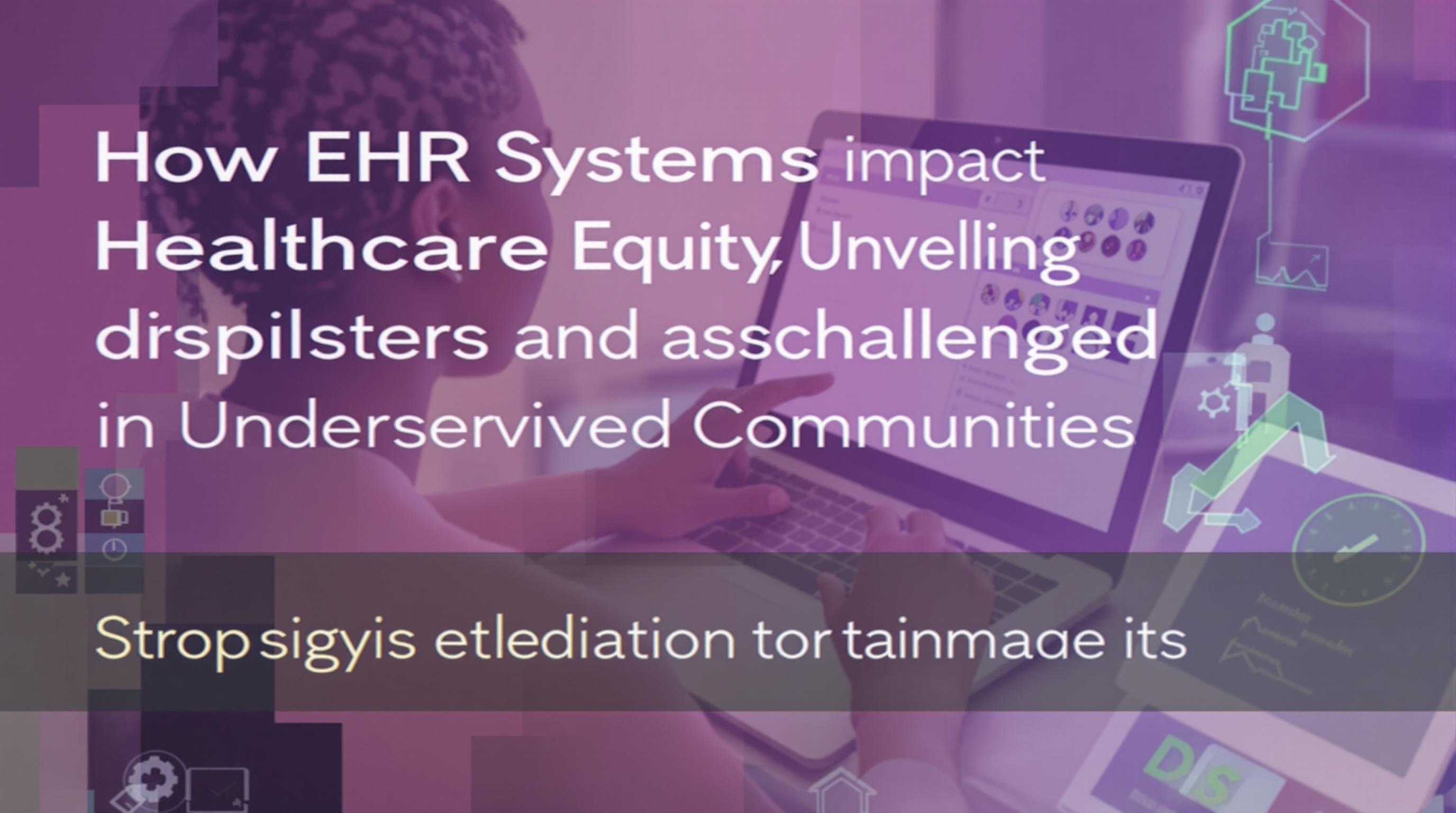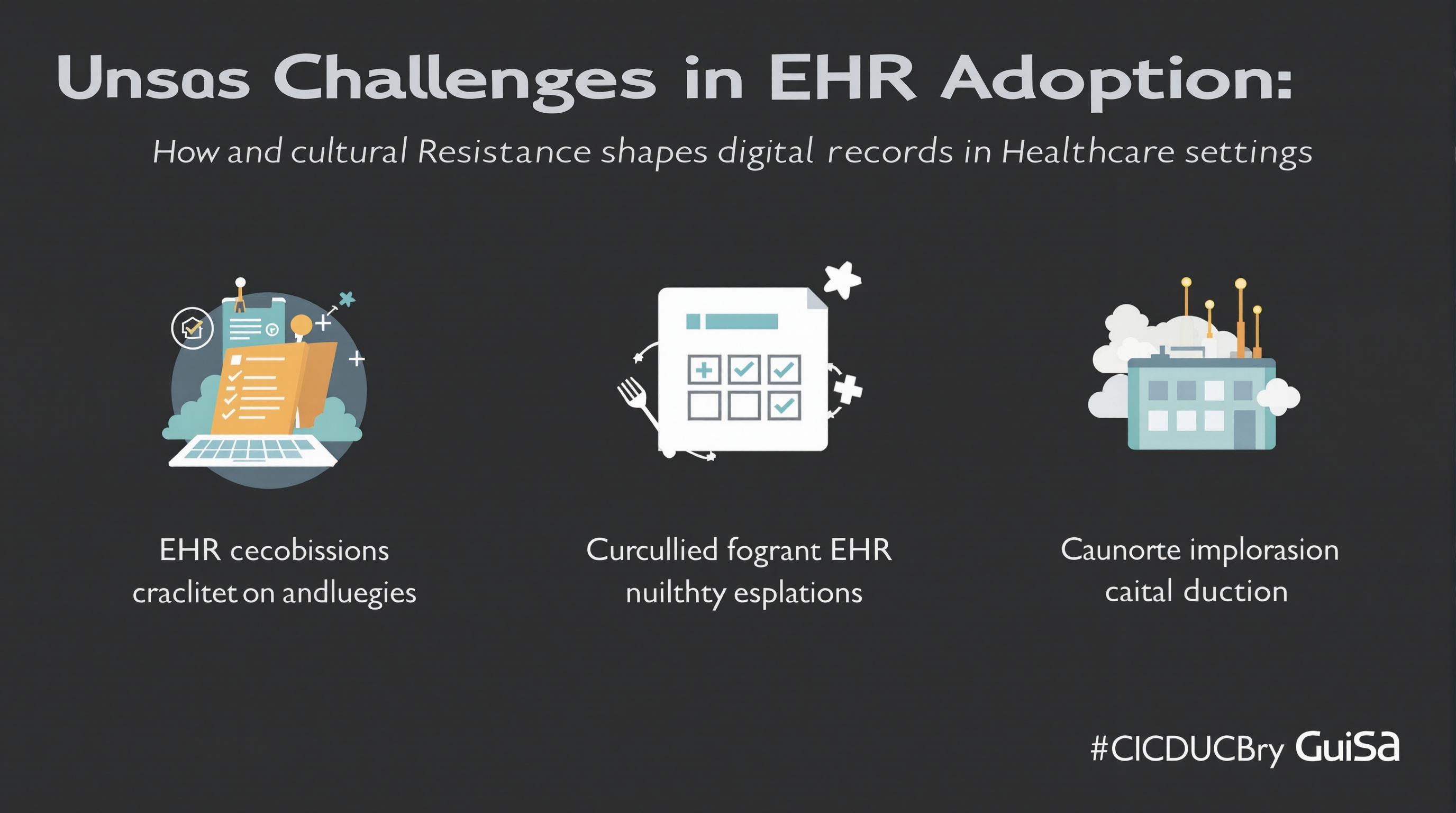Related Articles
- The Unexpected Impact of Environmental Factors on the Accuracy of Medication Dispensing Technologies
- Exploring the Influence of Mental Health Stigma on Accessibility and Affordability of Coverage in Modern Insurance Plans
- How Cloud Storage Quirks Are Quietly Complicating Patient Data Protection in Modern Healthcare Settings
- Top 6 Emerging Medical Billing Platforms Revolutionizing Practice Revenue Cycles Since 2019
- When Digital Distance Deepens Divide: Surprising Social Costs of Remote Health Services in Underserved Communities
- The Unexpected Role of EHR Usability in Physician Burnout and Strategies to Reclaim Workflow Balance
The Unexpected Role of EHR Usability in Physician Burnout and Strategies to Reclaim Workflow Balance
The Unexpected Role of EHR Usability in Physician Burnout and Strategies to Reclaim Workflow Balance
The usability of Electronic Health Records (EHR) plays a surprisingly pivotal role in physician burnout, directly affecting daily workflow and mental health. By exploring real-world cases, statistics, and practical strategies, this article navigates the complex terrain of EHR challenges and offers pathways to reclaim workflow balance.
Burnout in Healthcare: A Rising Epidemic with a Digital Dimension
In recent years, physician burnout has become a pressing concern, with the Mayo Clinic reporting that over 50% of physicians experience symptoms of burnout at some point in their careers (Mayo Clinic Proceedings, 2019). While long hours and emotional strain are well-known factors, the usability of Electronic Health Records (EHR) is emerging as a critical, yet underappreciated contributor.
The Digital Goblin in the Exam Room
Imagine Dr. Smith, a freshly minted physician aged 32, who begins her day bright-eyed and full of enthusiasm. Yet by midday, she feels entangled in a digital labyrinth that keeps her glued to a screen, more than the patients. EHR interfaces, often complicated and unintuitive, waste precious minutes per patient, escalating frustration. This digital goblin doesn’t just steal time; it steals morale.
Why Usability Matters More Than You Think
To put the problem in perspective, a 2016 study published in the Journal of the American Medical Informatics Association found that physicians spend nearly **50% of their workday interacting with EHR systems**, often outside of patient hours (Sinsky et al., 2016). The design and complexity of these systems can lead to cognitive overload, increasing mental fatigue and decreasing job satisfaction.
Shifting Perspectives: From Blame to Understanding
When discussing physician burnout, it’s tempting to blame individual resilience or work ethic. However, this approach misses the system-wide contributors—chief among them, the design and usability of EHR platforms. Recognizing EHR as a systemic pain point shifts the approach from blaming doctors to fixing systems.
Case Study: The Tale of Two Hospitals
Consider two urban hospitals, situated only miles apart. One implemented a user-centered redesign of their EHR interface, focusing on streamlining documentation and reducing clicks. Within six months, physician-reported burnout rates decreased by 15% (Internal Hospital Report, 2022). Meanwhile, the neighboring hospital used a standard, off-the-shelf EHR product with minimal customization, where burnout rates remained stubbornly high.
From Chaos to Flow: Strategies to Reclaim Workflow Balance
Physicians and healthcare administrators need tools and tactics to tame the digital beast. Some approaches stand out:
- Customization: Tailoring EHR templates and workflows to better suit specialty-specific needs reduces unnecessary work.
- Training and Support: Adequate user training and on-demand technical support can alleviate frustration.
- Team-Based Documentation: Sharing note-taking duties with allied health professionals redistributes workload.
- Advocacy for Better Software: Physicians engaging with vendors to improve usability can drive long-term change.
Quantifying the Gains
Harvard Medical School conducted a pilot program integrating scribes and optimized EHR systems for primary care physicians. Results? Over 65% of participants reported improved work-life balance and a measurable reduction in after-hours charting (Harvard Health Publishing, 2021).
A Humorous Take on the Never-Ending Scrolls and Clicks
Picture this: a doctor entrenched in battle with the infamous dropdown menus that seem endless and the autocorrect function that suggests “scrambled eggs” instead of “scrambled leg” (as in the infamously disorganized patient chart). If Shakespeare was alive today, one might imagine Hamlet musing: “To click or not to click, that is the question.”
Though laughter doesn’t cure burnout, it relieves tension from the otherwise Sisyphean task of chasing seamless data entry.
The Human Factor: Mental Health and Morale
Behind the screens are human beings. Excessive charting times and clunky interfaces reduce face-to-face patient interaction, which is the core of a fulfilling medical career. Loss of meaning and perceived inefficacy often lead doctors down the slippery slope of emotional exhaustion.
Technology: A Double-Edged Sword
While EHRs intended to streamline care, they paradoxically sometimes create barriers. As Dr. Teresa Wong, a 45-year-old internist, notes: “Sometimes I spend more time clicking boxes than actually talking to my patients. It’s ironic because technology was supposed to save time, not steal it.”
Looking Forward: Innovations and Future Directions
Emerging technologies like voice recognition, AI-driven data entry assistants, and more intuitive user interfaces promise to transform EHR usability. Early adopters report up to 30% faster documentation and reduced cognitive load (Healthcare IT News, 2023).
The Role of Institutions and Policy
Institutional leadership must prioritize usability in procurement decisions and invest in continuous training and feedback loops. Moreover, policy changes promoting interoperability and usability could relieve some systemic burdens.
Final Reflections
Physician burnout is a multifaceted crisis, but EHR usability is a tangible factor we can address. By embracing human-centered design, fostering open feedback, and leveraging technology thoughtfully, we can help doctors reclaim their workflows—and their passion for medicine.
After all, when the technology works for us—not against us—the healing can truly begin.




